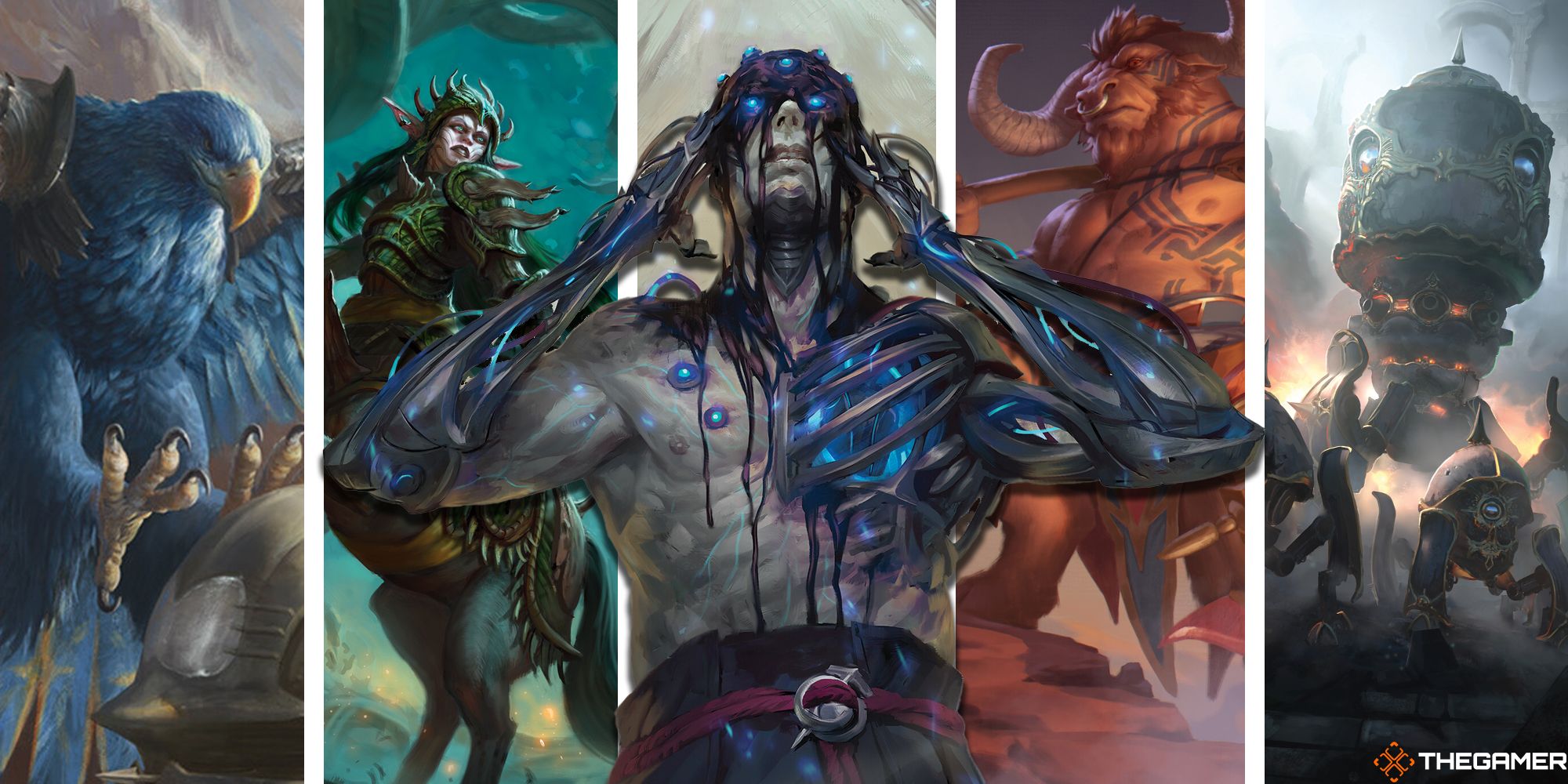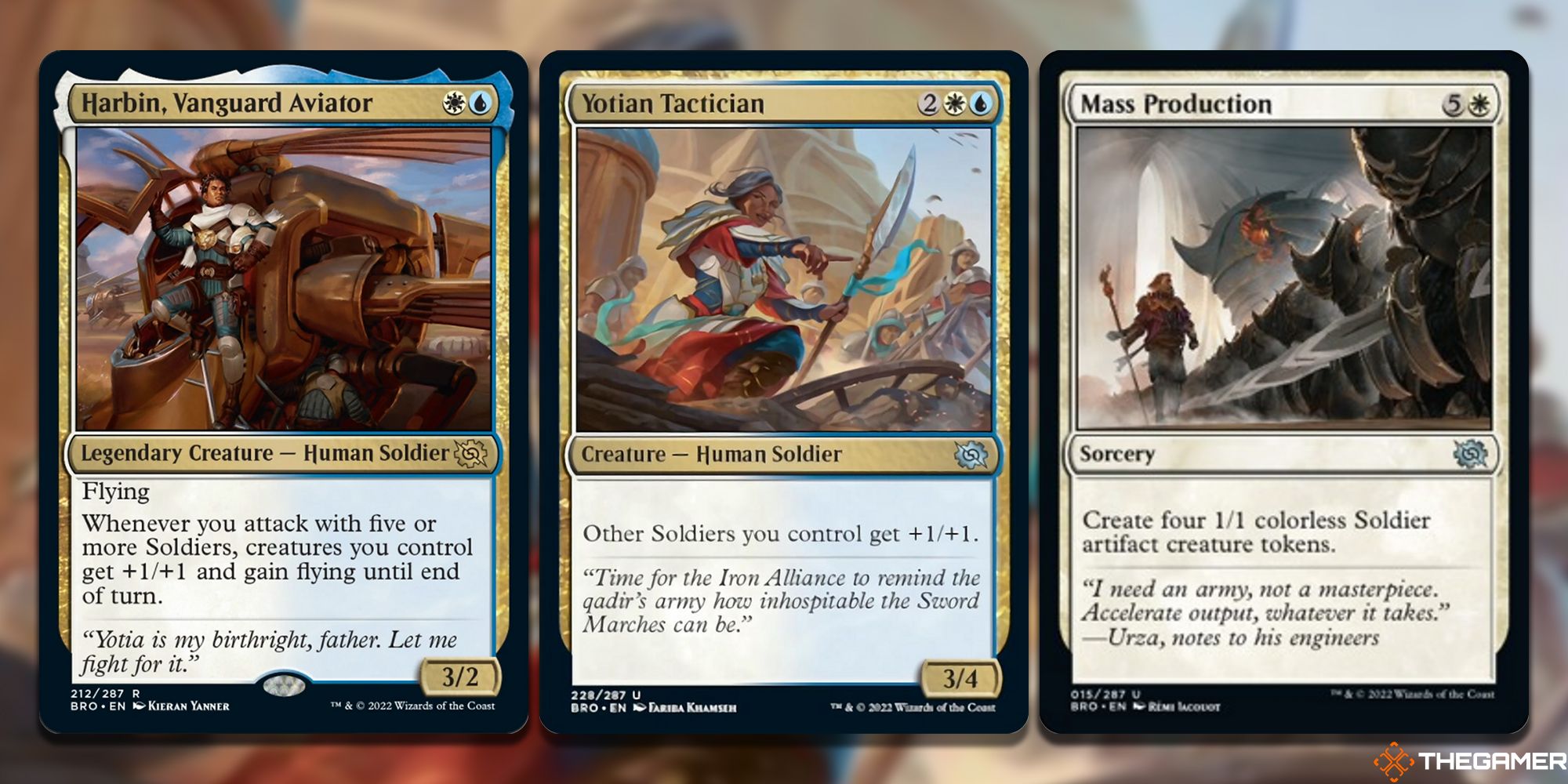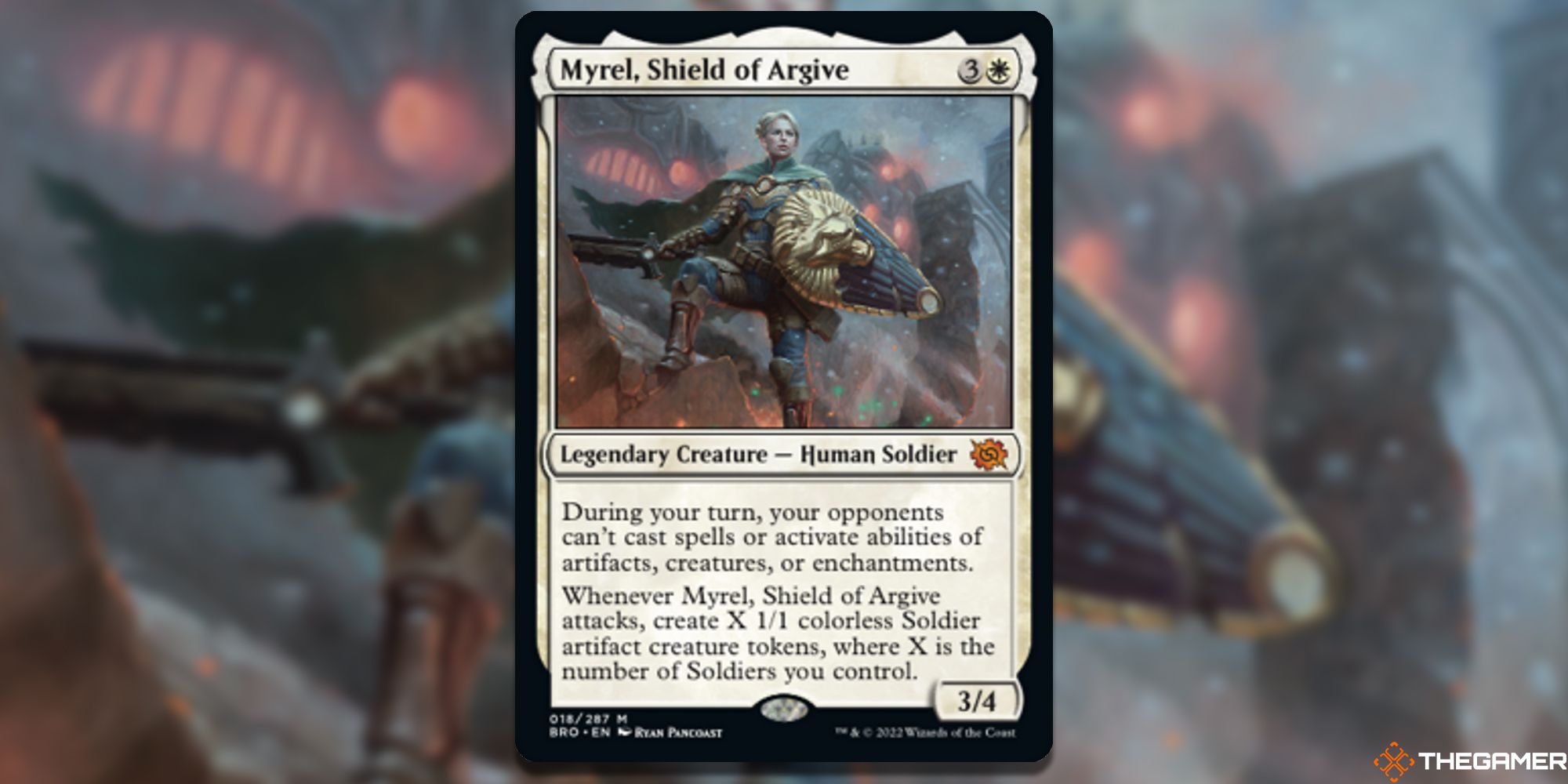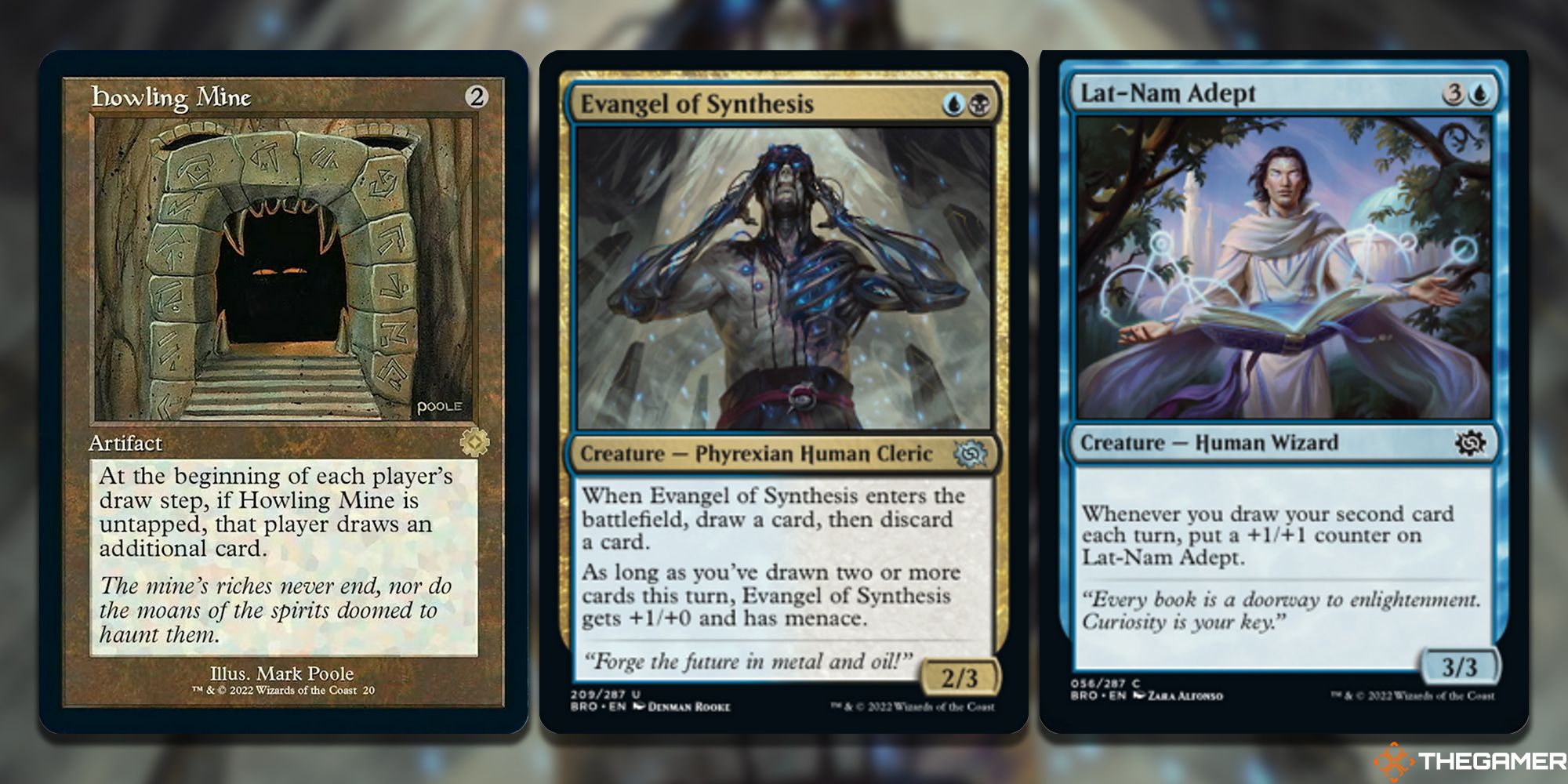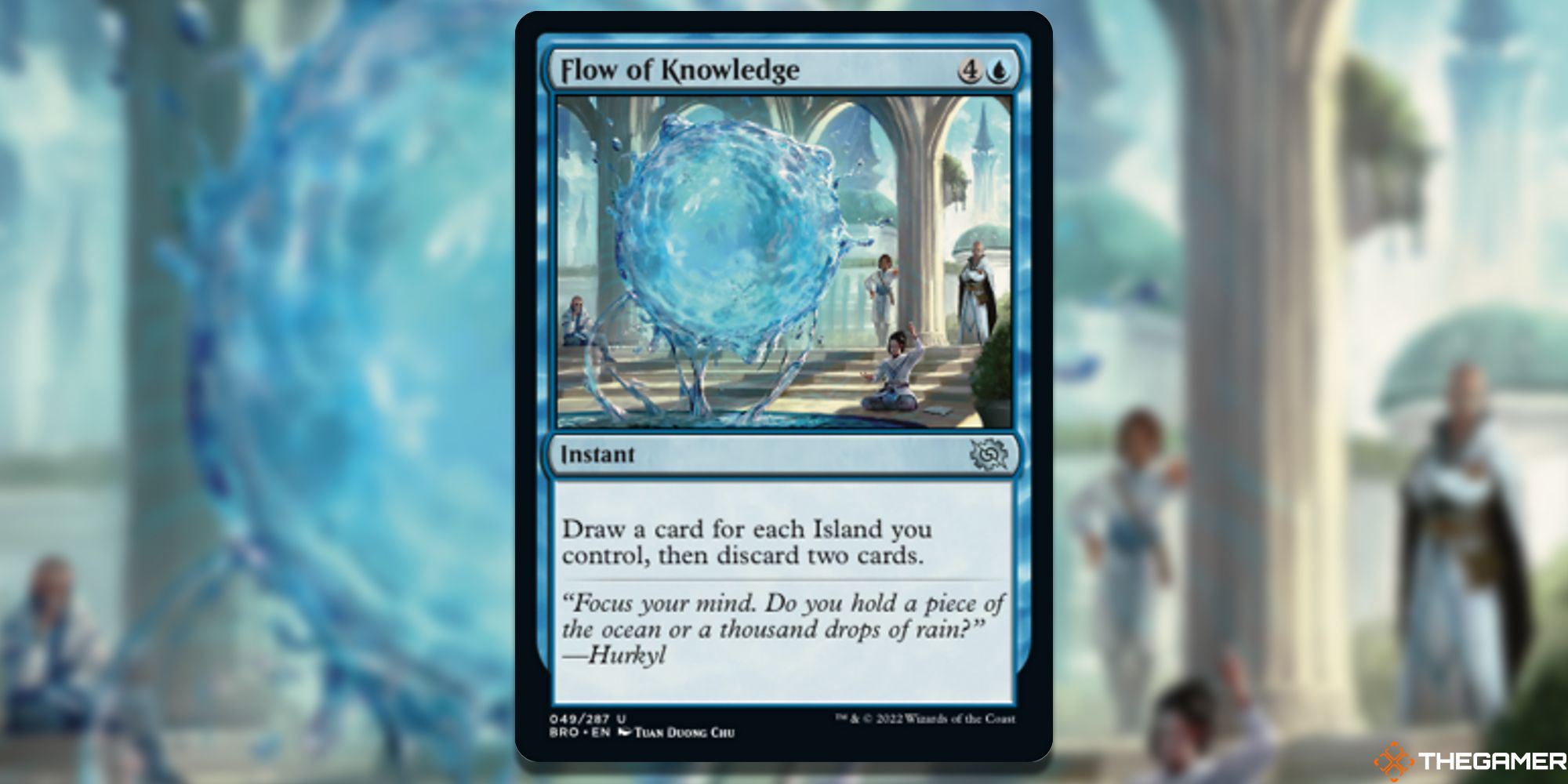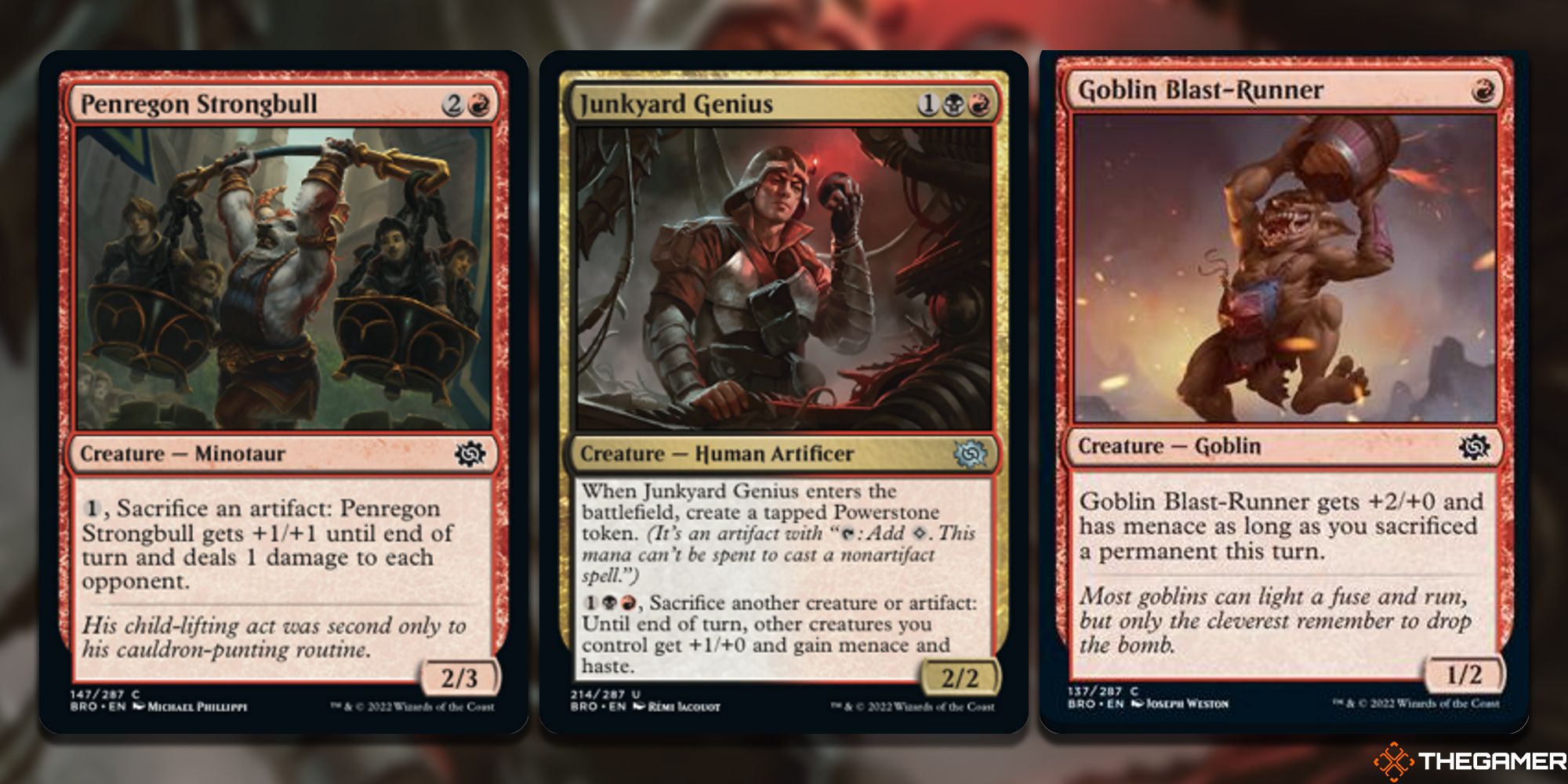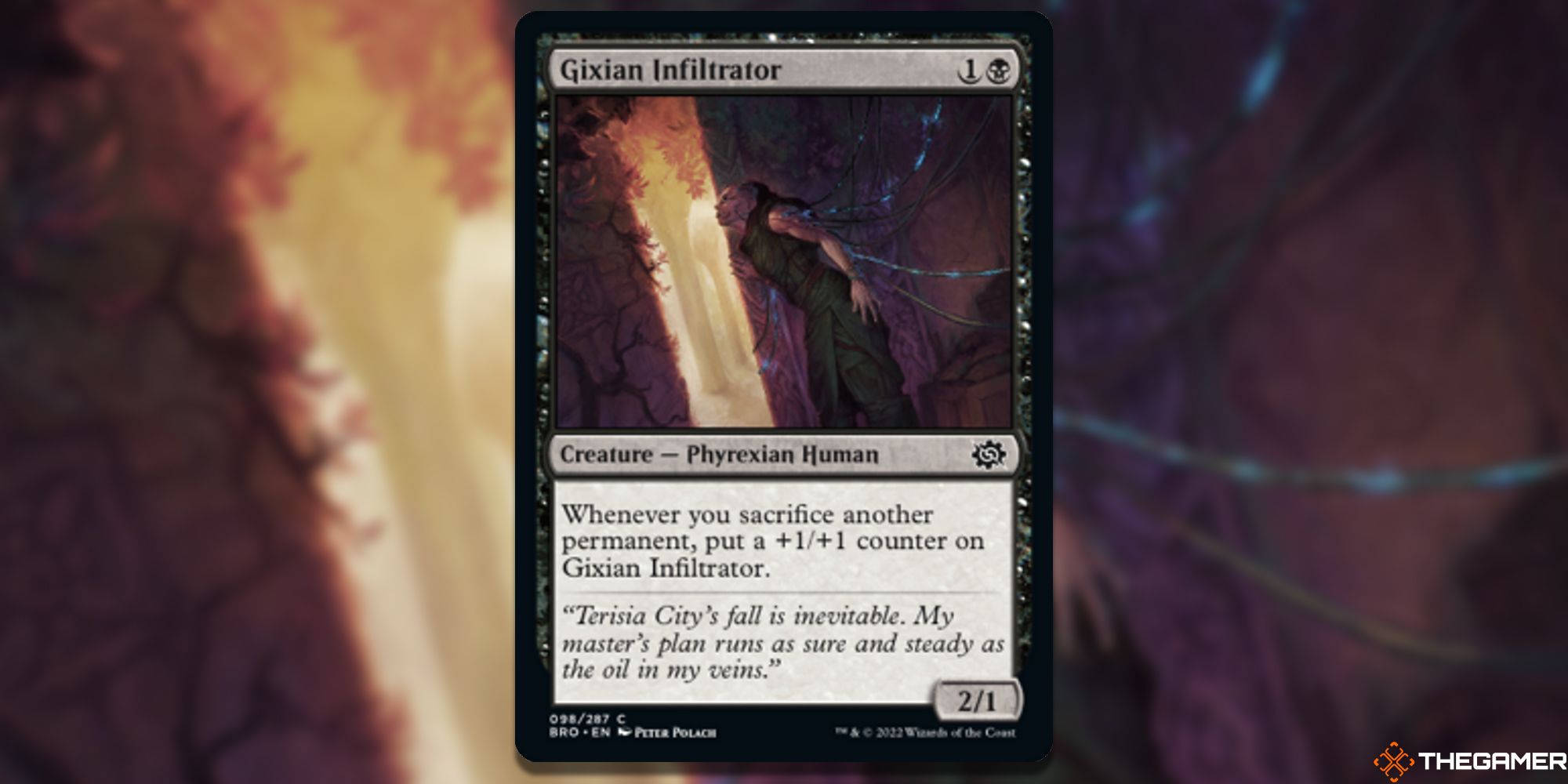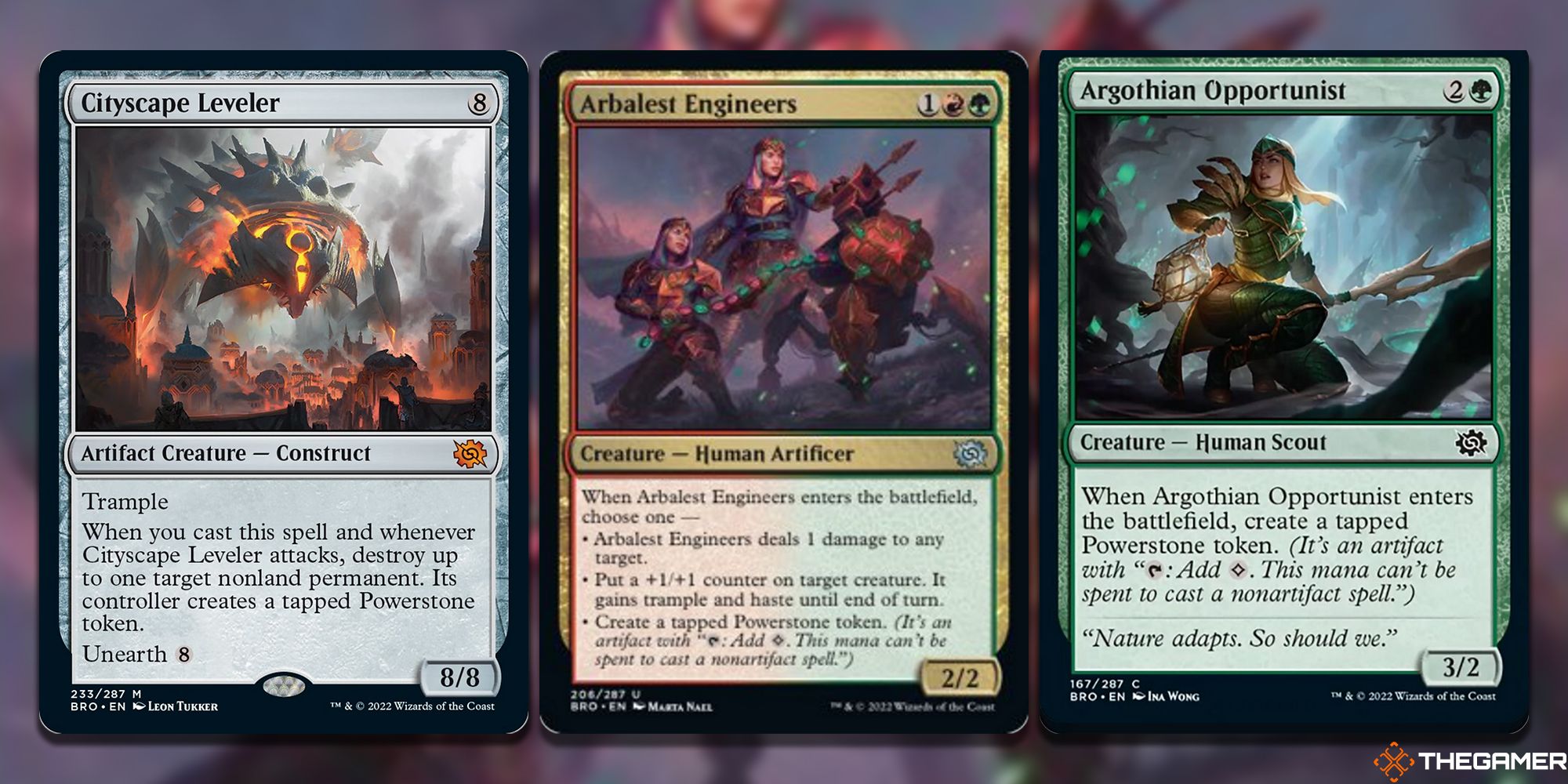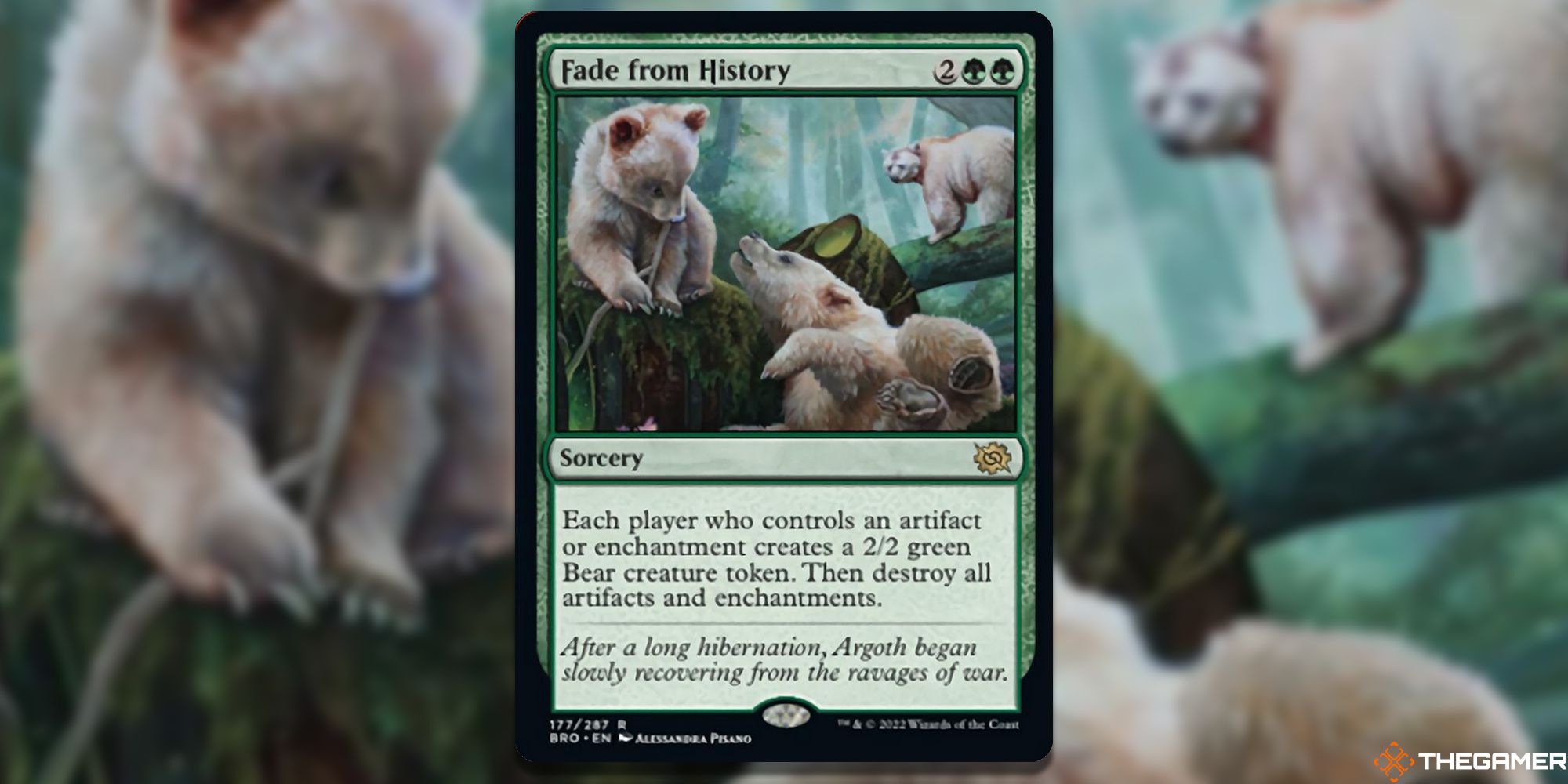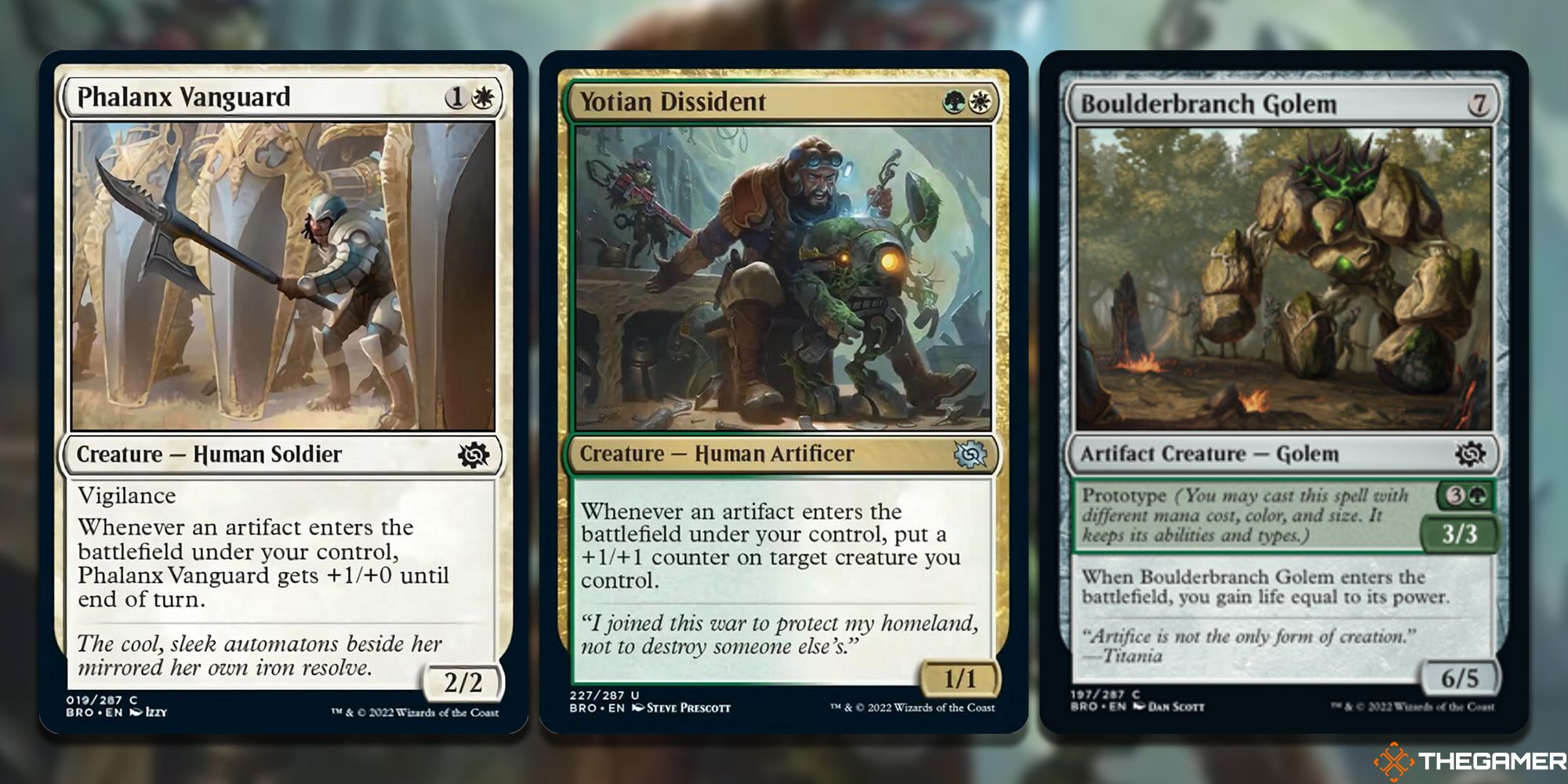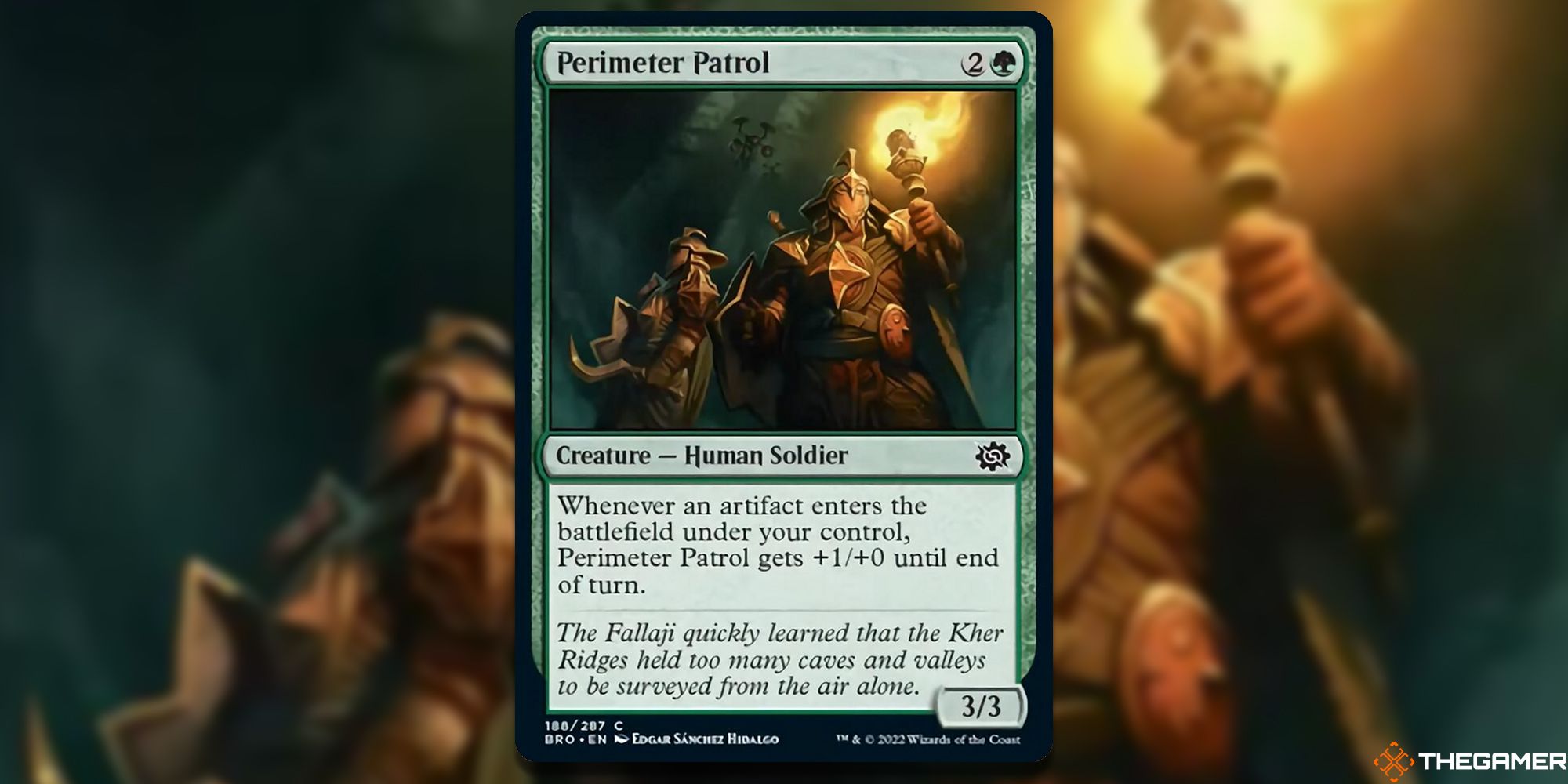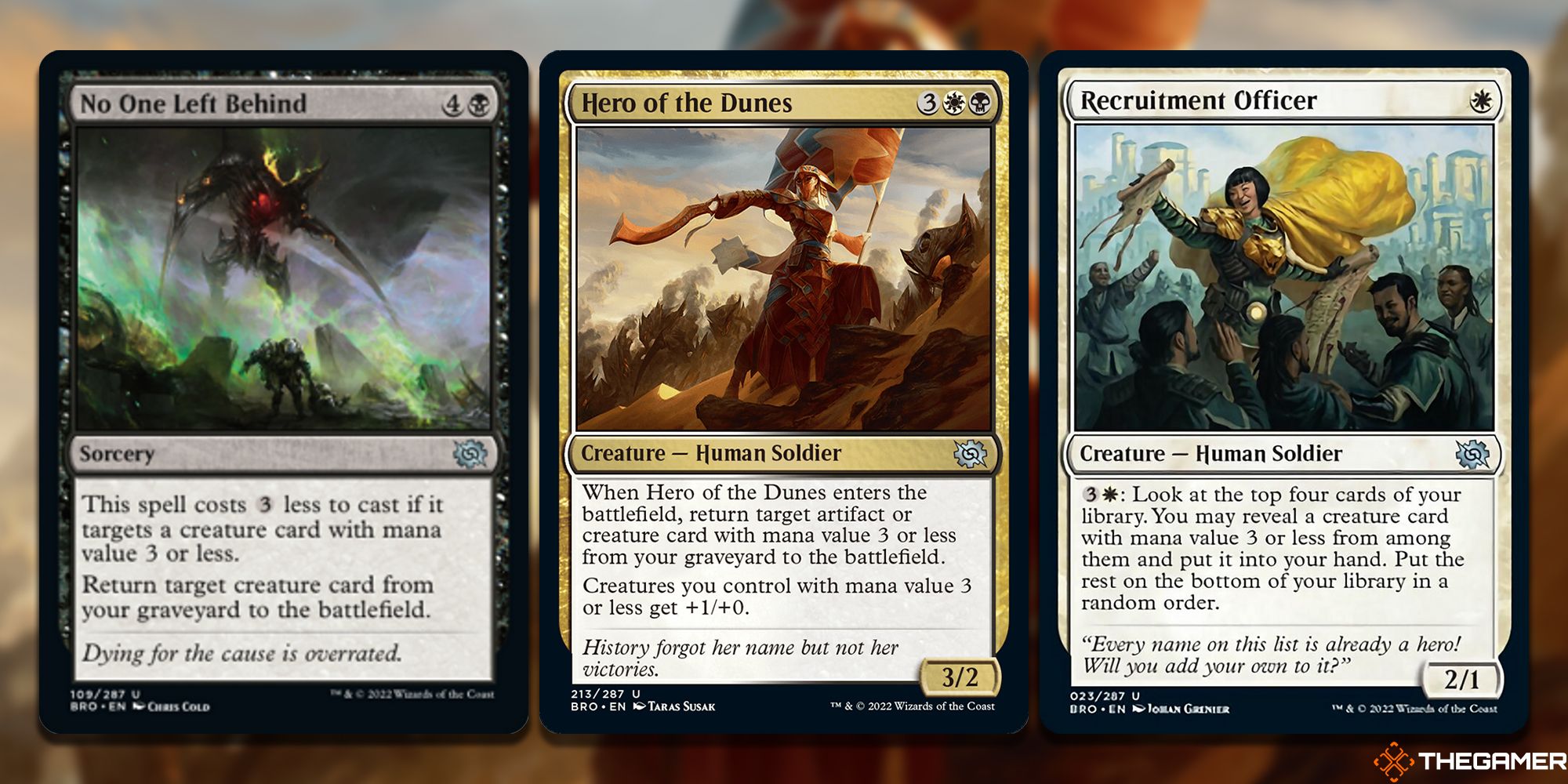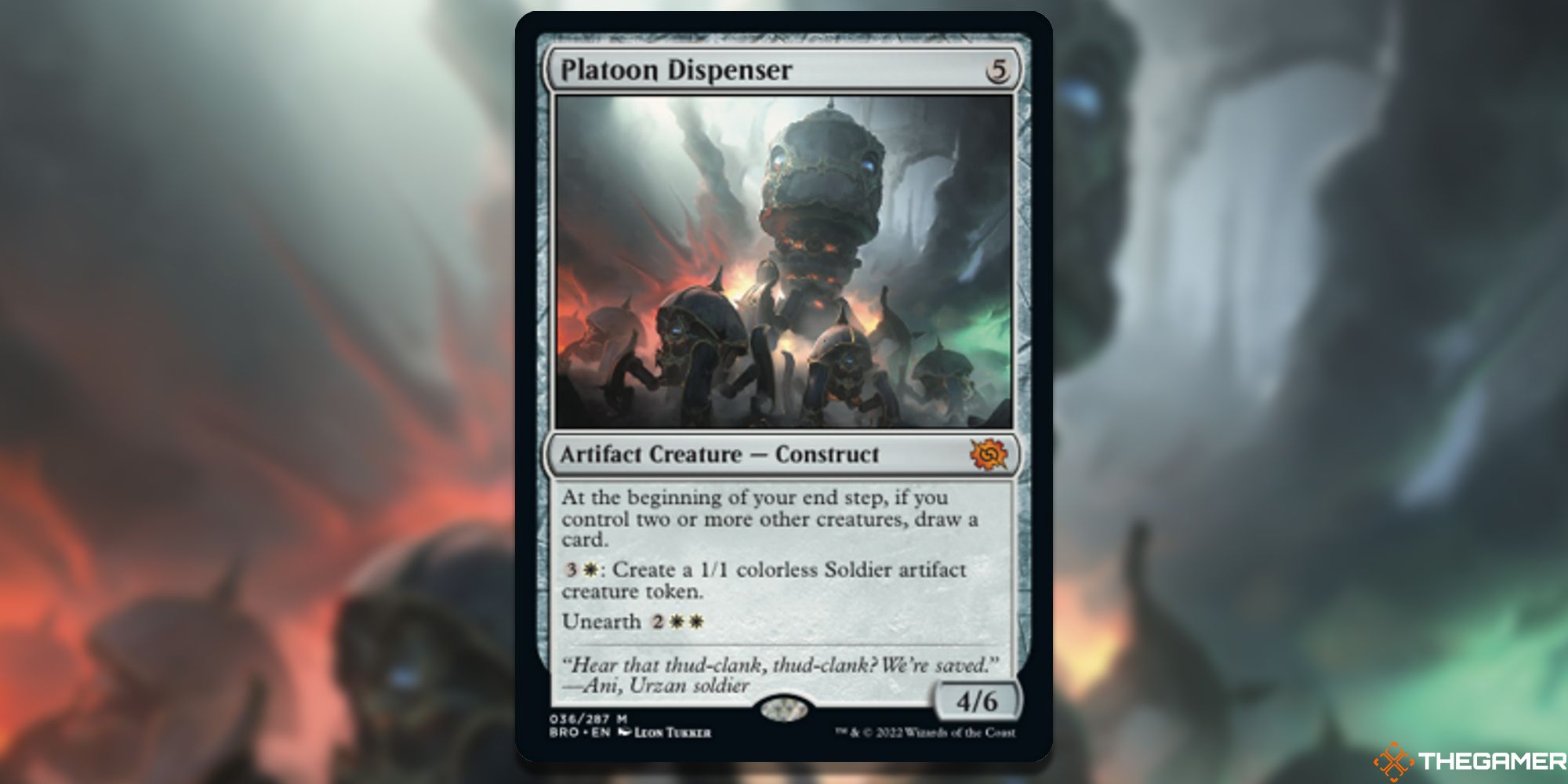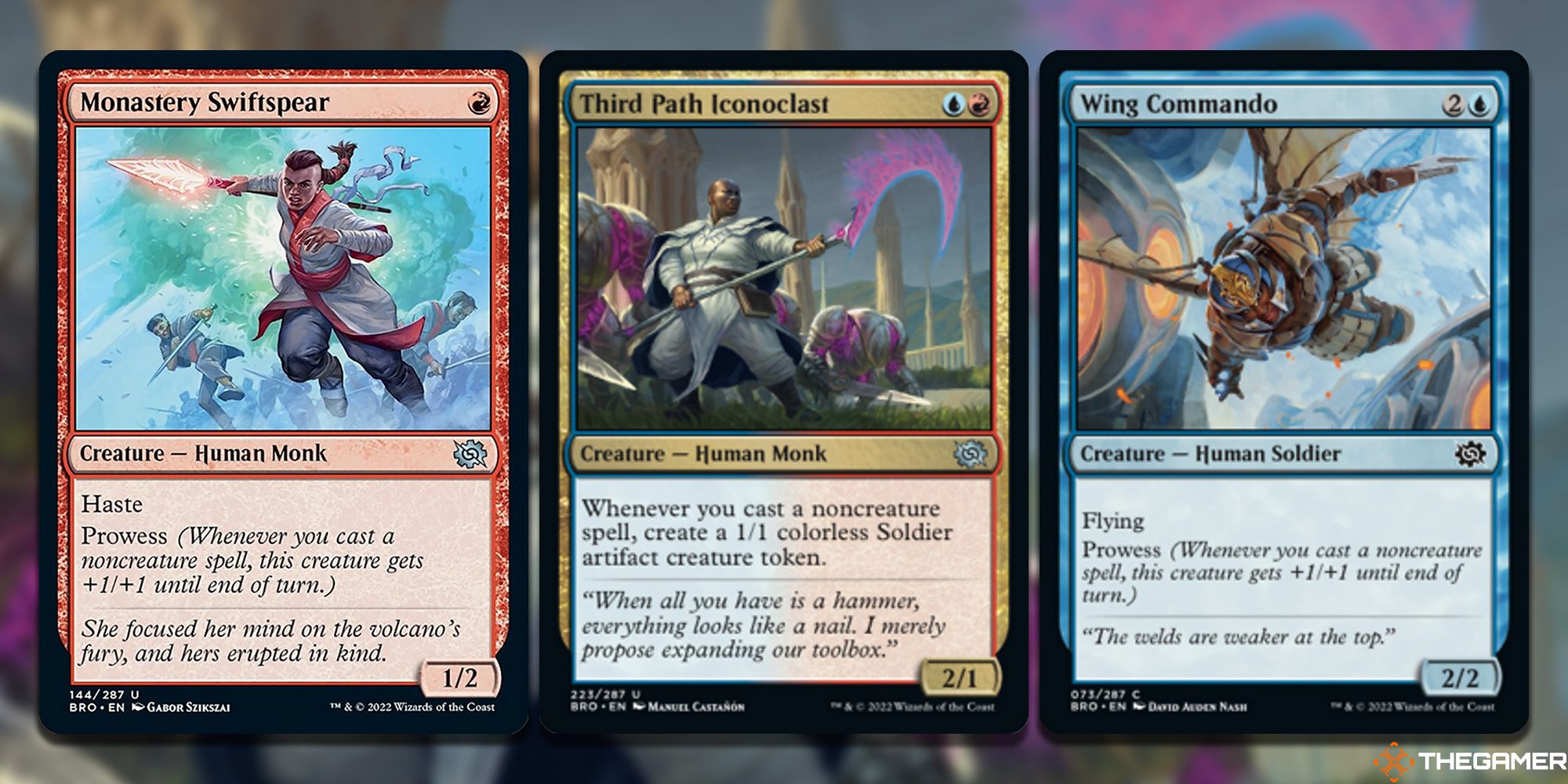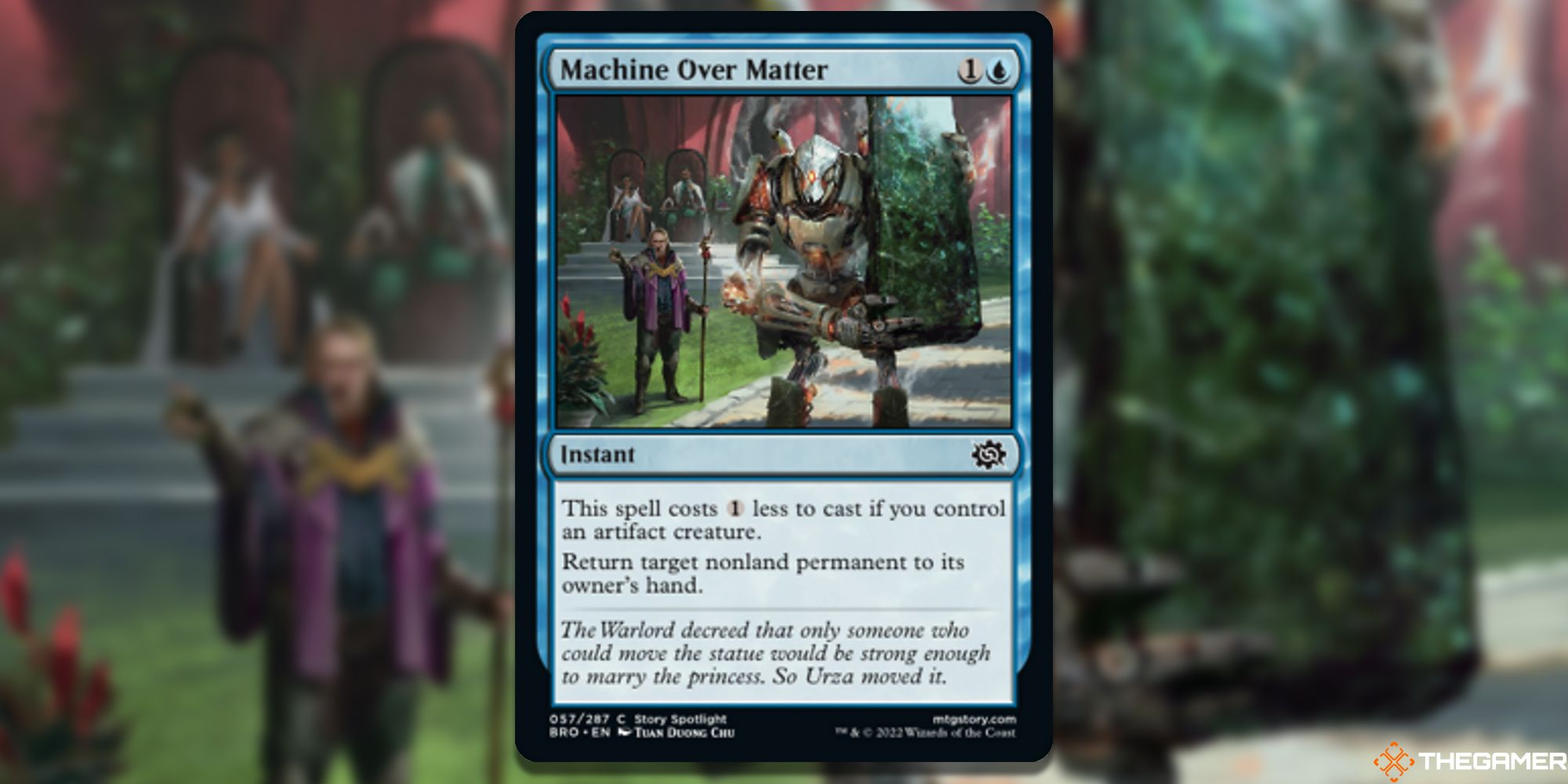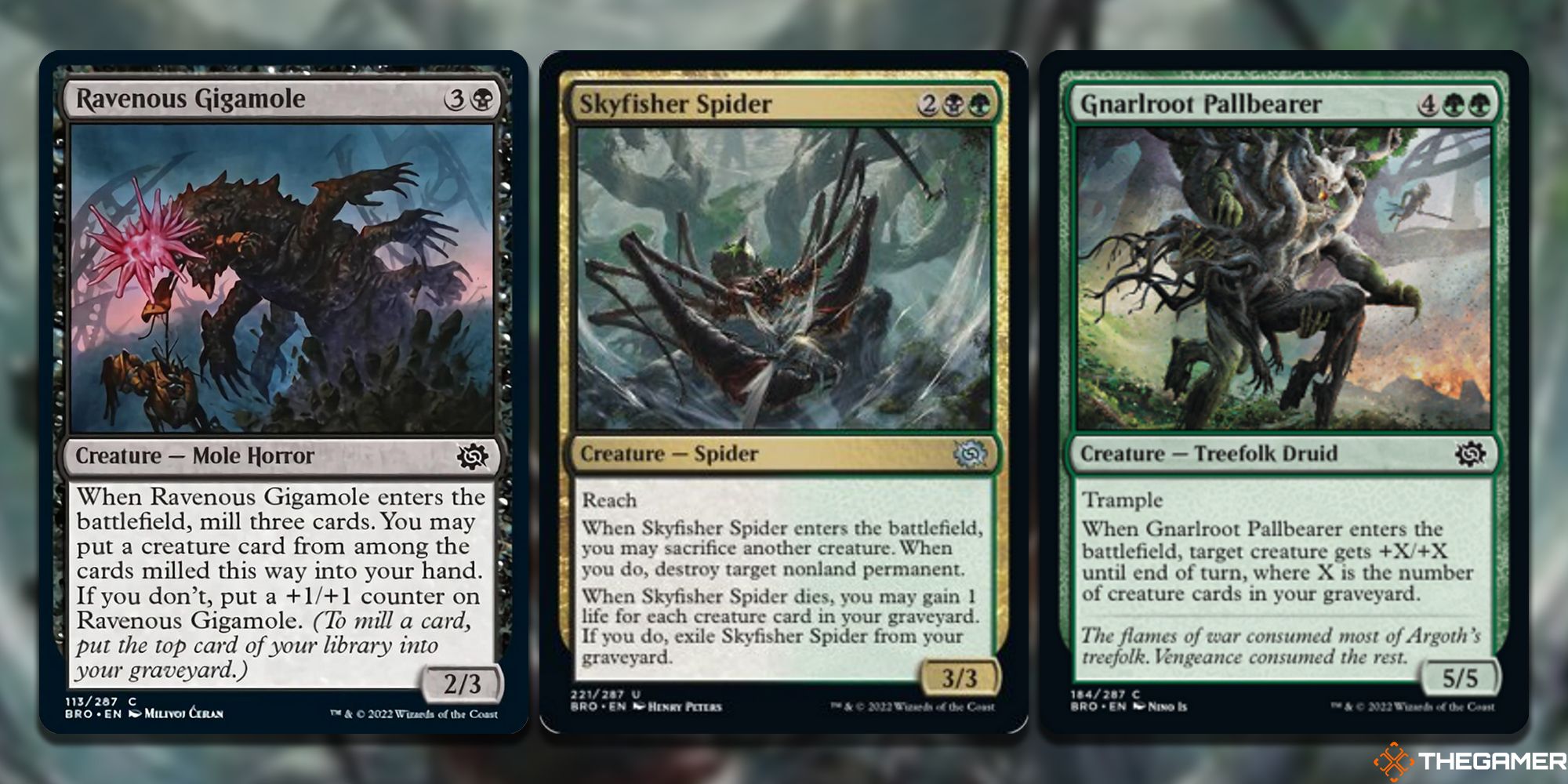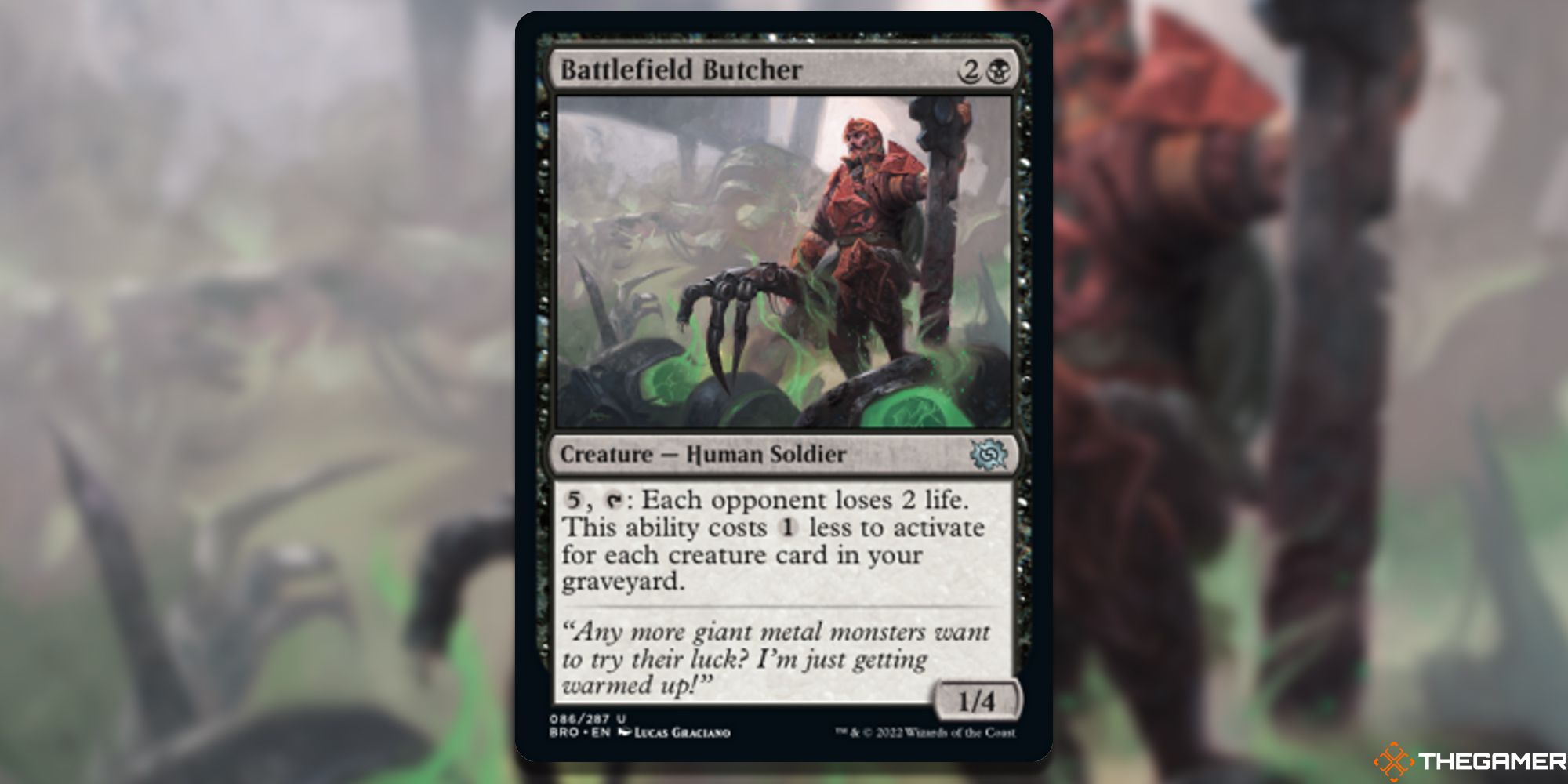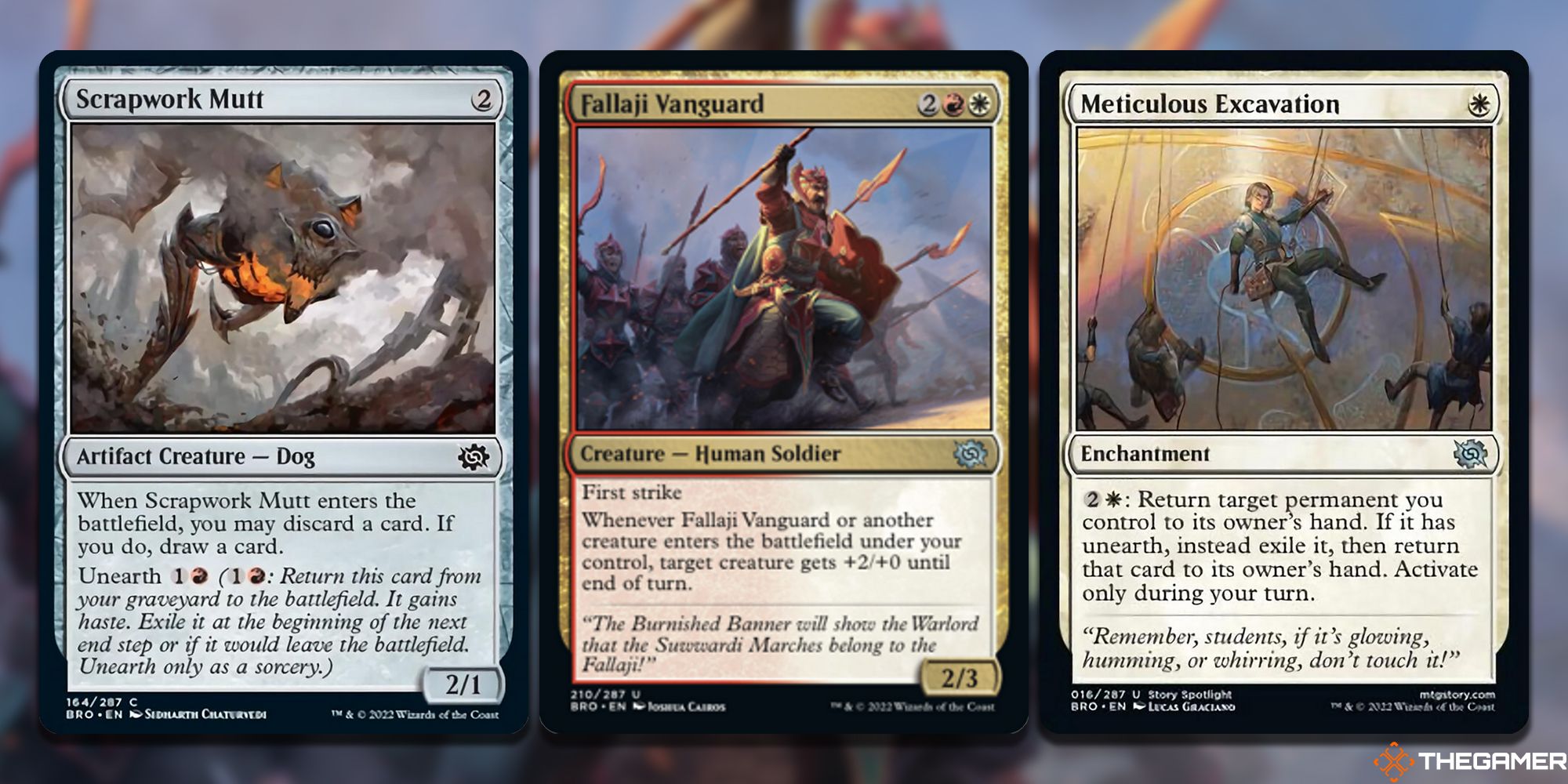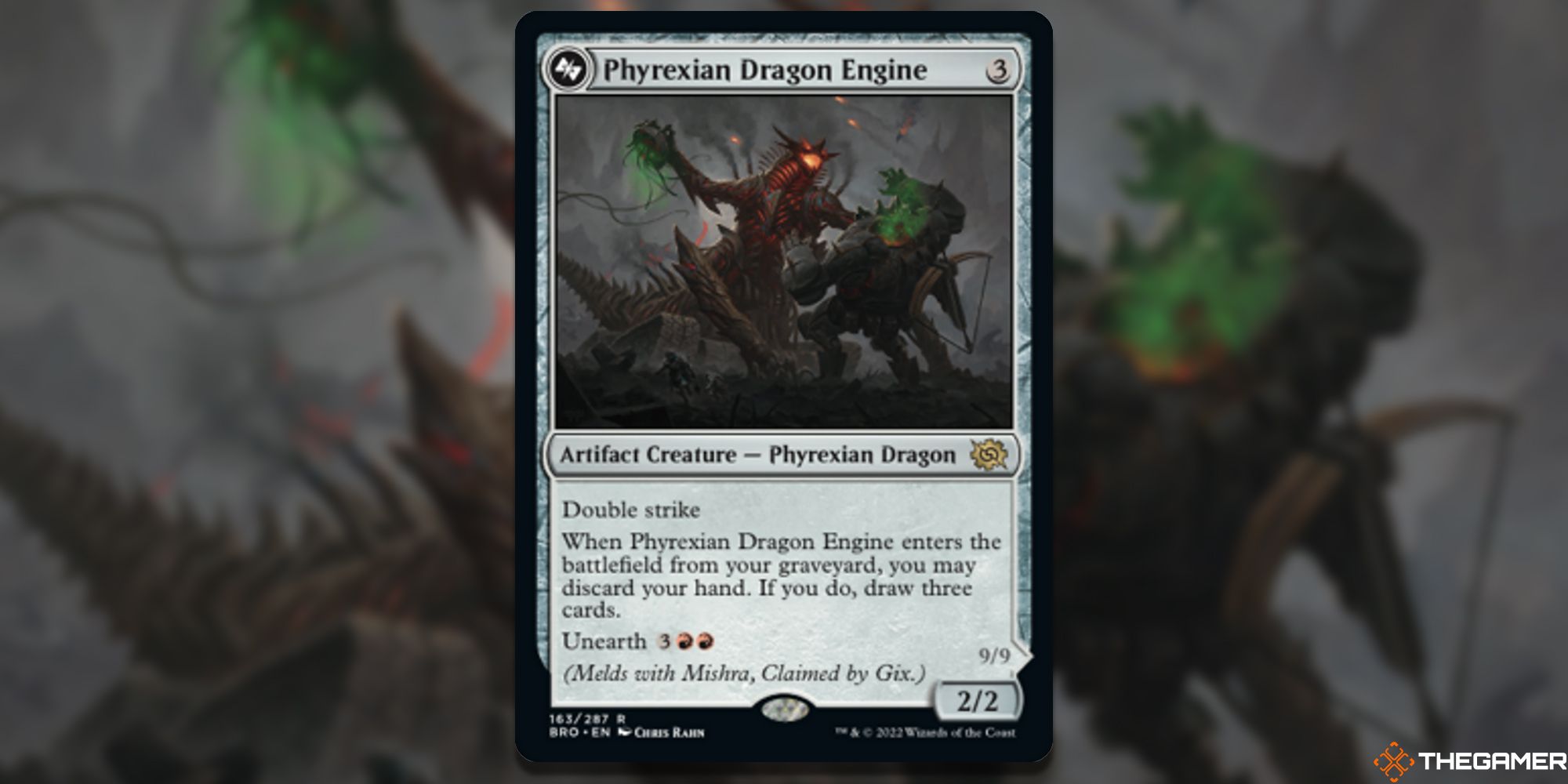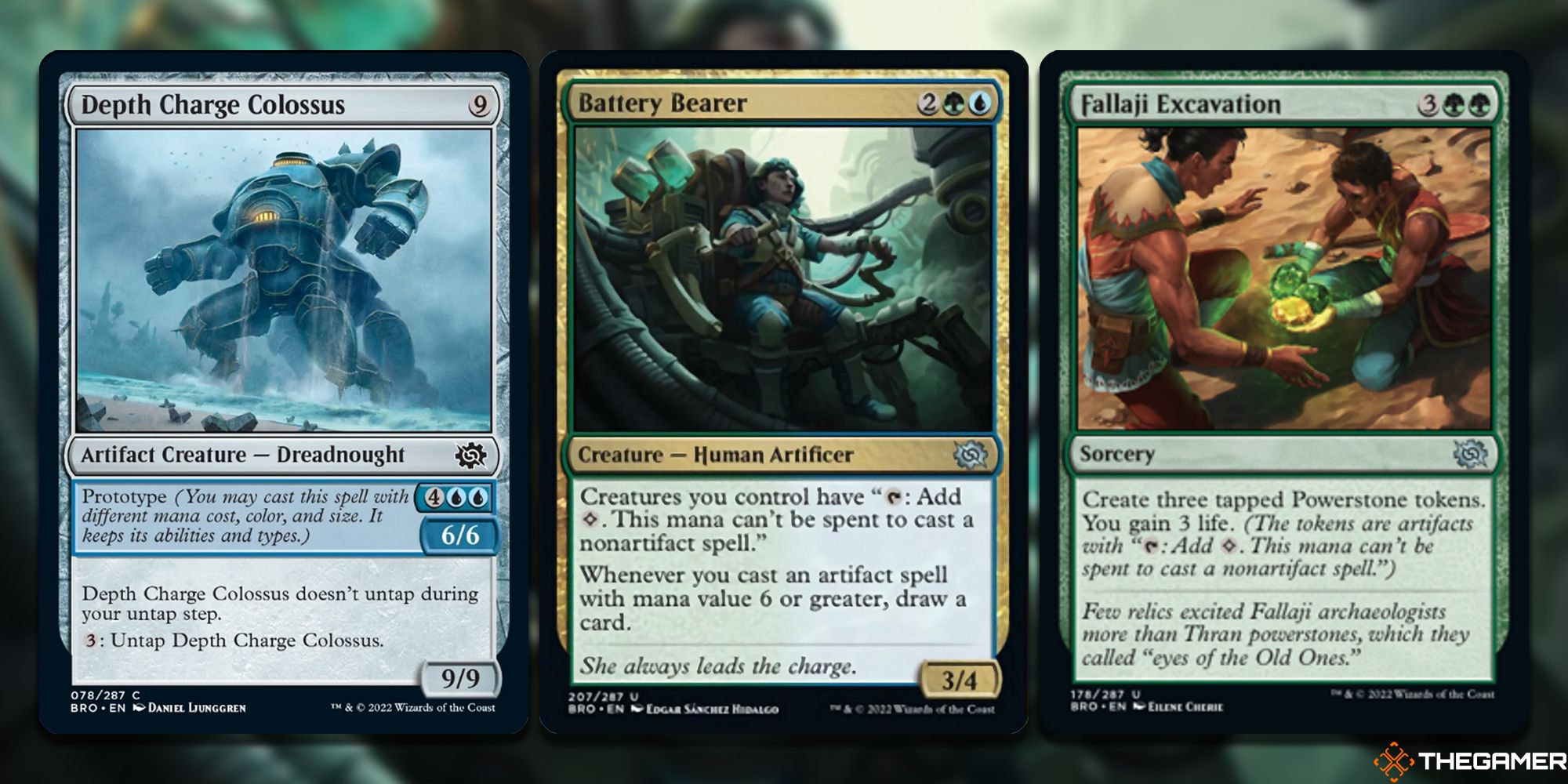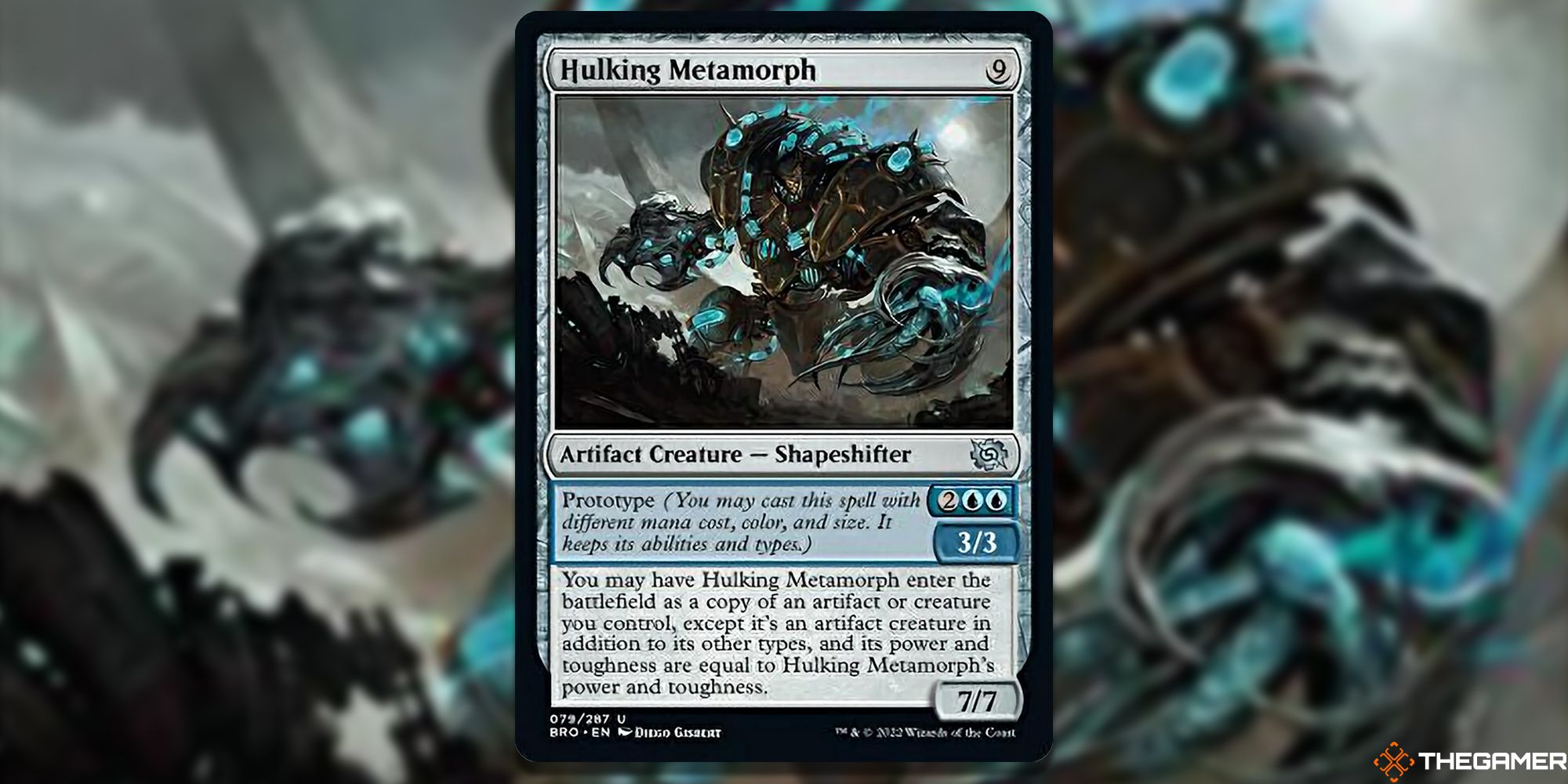Quick Links
The Magic: The Gathering sets before The Brothers’ War were notably more complex in their limited environments than usual. We had Streets of New Capenna and Double Masters 2022 challenge us to make three-colour decks, while Dominaria United wanted to splash up to the full five.
The Brothers’ War has returned to a simpler setup, with ten two-colour combinations vying for your attention. Whether you’re playing in a draft or sealed, you can go into The Brothers’ War armed with the knowledge of what to look out for, and what to avoid.
White/Blue: Soldier Tribal
One of the most clear-cut draft archetypes in all The Brothers’ War is white and blue’s Soldier creature type theme. The plan is simple: get as many Soldiers as you can into play, before running your opponent down with lots of evasion.
The signpost for this is Yotian Tactician, who rewards you going wide by giving all your soldiers +1/+1. This is one you’ll want to drop near the end of a game when you’re ready to take the win, otherwise it’ll be picking up removal like nobody’s business.
There are lots of ways to make Soldiers, such as Mass Production, Myrel, Shield of Argive; Siege Veteran, Platoon Dispenser, Skystrike Officer, and Scrapwork Cohort. From there, you’ll want to be finding ways to either beef them up or make them evasive, like Harbin, Vanguard Aviator; Air Marshal, Aeronaut Cavalry, and Retrieval Agent. If you keep the Soldiers coming, you should gain enough momentum to then throw Harbin onto the battlefield and swing in all at once.
Blue/Black: Draw Power
One of the things blue and black are both best at is drawing lots of cards, and so the blue/black archetype rewards you for drawing at least one extra card each turn. Signposted by Evangel of Synthesis, a Phyrexian Human Cleric that gains +1/+0 and menace whenever you draw a card, it’s an archetype we’ve seen in other colours before – notably Throne of Eldraine’s blue/red colours.
There are tons of ways to draw cards in The Brothers’ War. From simple cantrip effects like Curate and Moment of Defiance, to more dedicated draw tools like Thraxodemon, Gruesome Realization, Fateful Handoff, Urza, Powerstone Prodigy; Take Flight, and Flow of Knowledge. You also have access to Howling Mine in the retro-frame reprints, which will guarantee you get a second draw every turn, no further work needed.
There are plenty of pay-offs other than Evangel of Synthesis. Lat-Nam Adept, Thopter Mechanic, and Gurgling Anointer all get +1/+1 counters on drawing your second card, while Gixian Puppeteer drains your opponent for two life. Get a few of them on the battlefield and you’ll be putting a serious clock on your opponent before all their life is sapped away.
Black/Red: Artifact Sacrifice
Black and red are keeping things traditional for their draft archetype, with Rakdos doing what Rakdos does best: sacrificing things. This is best exemplified by its draft signpost, Junkyard Genius, which can sacrifice an artifact or creature to give all your creatures +1/+0 and menace.
Fortunately, lots of the sacrifice outlets in this set, like Powerstone Fracture, Thraxodemon, and Penregon Strongbull all allow you to sacrifice either creatures or artifacts. This works incredibly well in a draft environment so full of Powerstone tokens – especially for Penregon Strongbull, who can use the Powerstones to pay for his own ability before sacrificing them for a potential winning attack.
Also look out for Gixian Infiltrator, who grows bigger with each permanent you sacrifice, and Goblin Blast-Runner, which gains menace whenever you sacrifice something to make it harder to block.
Red/Green: Powerstone Midrange
Of all the archetypes in The Brothers’ War, red/green feels the least fleshed out. Powerstone Midrange is all about producing Powerstone tokens and using them to cast bigger spells ahead of the curve, or beef up creatures with activated abilities.
The signpost for this archetype is Arbalest Engineers, which highlights some of the flexibility needed for a good midrange deck. It can take out small creatures that would be pesky blockers otherwise, allow you to swing through with a bigger creature by giving it trample, or simply make another Powerstone token to fuel your strategy. You can also make more Powerstone tokens with Fallaji Excavation, Argothian Opportunist and Hall of Tagsin.
Midrange decks tend to focus on controlling the board in the early stages of the game before swinging in for lethal damage. You can manage your opponent with things like Bushwhack, Excavation Explosion, Fog of War, and Fade from History, which gives you enough time to stock up on those Powerstone tokens.
Powerstoken tokens can’t cast any spells that aren’t artifacts, but fortunately red and green have access to loads of powerful artifact creatures for you to bring the game to a close with. Your goal is to build up your tokens enough for things like Fallaji Dragon Engine, Cityscape Leveler, Boulderbranch Golem, Blitz Automaton, Artificer’s Dragon, and Iron-Craw Crusher. Getting these in play after spending the whole game stalling your opponent’s board will be absolutely devastating.
Green/White: Artifact ETB
These colours are concerned with abilities that trigger when artifacts enter the battlefield. Considering how many artifacts this set has, it could potentially be one of the strongest in the format thanks to cards like its signpost uncommon, Yotian Dissident, which lets you put +1/+1 counters on any of your creatures when an artifact enters.
Much like the red/green archetype, green/white benefits hugely from Powerstone tokens, as they’re easily produced and can trigger the likes of Yotian Dissident, Phalanx Vanguard, Thopter Architect, Perimeter Patrol, and Sarinth Steelseeker.
You’ll also want to keep an eye out for artifacts that have their own ETB triggers, to ensure you’re getting even more value. Combat Thresher lets you draw a card, Scrapwork Cohort makes creature tokens, Boulderbranch Golem gives you live, and Woodcaller Automaton can animate your lands. Your goal here is to swamp your opponent under as much value as you can find, so don’t be afraid to splash out on these more expensive spells using all those Powerstones you’re generating.
White/Black: Recursive Aggro
Uncharacteristically for white and black, The Brothers’ War’s Orzhov archetype uses graveyard recursion to drive an aggro strategy. You’ll be needing to keep the pressure up at all times with plenty of cheap creatures, while also making use of unearth to bring things back into play for one last swing.
The signpost for Recursive Aggro is Hero of the Dunes, who emphasises one key aspect of the archetype: you’ll want lots of creatures with mana values less than three. Things like Thraxodemon, Thran Vigil, Ambush Paratrooper, Airlift Chaplain, Powerstone Engineer, and Recruitment Officer make good choices for it.
You’ll need other reanimation enablers, such as No One Left Behind, Gixian Puppeteer, and Recommission, all of which work with small mana value creatures. For the bigger hitters later in the game, you’ll want to rely more on unearth. By dumping the likes of Platoon Dispenser, Tocasia’s Onulet, Cityscape Leveler, and Scrapwork Rager into your graveyard, before unearthing them at the right moment to cinch the game. If all else fails, you can always use Meticulous Excavation to bounce them back to your hand for a second try.
Blue/Red: Prowess
Blue and red are playing it safe for this set, bringing back one of its most popular archetypes with the debut of prowess as a deciduous keyword. Prowess is an aggressive strategy that relies on you casting lots of noncreature spells to beef up creatures like Dwarven Forge-Chanter, Monastery Swiftspear, and Wing Commando.
Although it doesn’t have prowess itself, the signpost for this archetype is Third Path Iconoclast, who keeps the attackers coming provided you can keep casting noncreature spells. Your goal is to flood the board with creatures, including as many copies of the set’s three prowess creatures as possible, before casing incredibly cheap spells like Goblin Firebomb, Weakstone’s Subjugation, Curate, Energy Refractor, Obliterating Bolt, Whirling Strike, and Machine Over Matter.
This is another archetype that really benefits from Powerstone tokens, as lots of the cheap spells you can cast to trigger prowess are artifacts. It might not be as flashy as the usual spellslinging approach the colours are known for, but if you need a Mishra’s Research Desk or Aeronaut’s Wings to finish the job, then so be it.
Black/Green: Graveyard
Black and green are sticking to the old Golgari classic: graveyard decks. It’s something the colours do in almost every set, and this time it’s being signposted by Skyfisher Spider, which helps you gain massive amounts of life when it dies depending on how many creatures are in your graveyard.
Self-mill is a vital part of this strategy, so make use of cards like Ravenous Gigamole, Blanchwood Prowler, Wasteful Harvest, and Burrowing Razermaw. You can also use some of the sacrifice outlets available to black, like Diabolic Intent, Thraxodemon, and Kill-Zone Acrobat to pad your graveyard out more if you need it
.
There are plenty of payoffs for having a full graveyard, such as Battlefield Butcher draining your opponent’s life, Ashnod, Flesh Mechanist using them as fodder to make Zombie tokens, Gaea’s Courser giving you card draw when you attack, and Gnarlroot Pallbearer being a potential game-winner by buffing something by the number of creatures in your graveyard.
In a pinch, don’t forget about unearth. Green doesn’t have as much access to it, but you’ve still got Perennial Behemoth to play lands out of your graveyard, and the likes of Terror Ballista and Ashnod’s Harvester to work with.
Red/White: Unearth Aggro
Red and white are often associated with aggro strategies, but The Brothers’ War is also borrowing an element of Strixhaven’s Lorehold college by giving us some graveyard recursion for good measure. As signposted by Fallaji Vanguard, you’ll be wanting to time your plays to ensure you can quickly swarm the board in a single turn for maximum impact.
Red and white has access to cheaper creatures with unearth than a lot of other colours, such as Yotian Frontliner, Scrapwork Mutt, Phyrexian Dragon Engine, Reconstructed Thopter, and Scrapwork Cohort. There’s also Platoon Dispenser, who can produce creature tokens and gives you card draw if you’ve got enough creatures in play. You’ll be aiming at casting these regularly and throwing them at your opponent, only to bring them back with unearth once your opponent has managed to kill them off.
This is another archetype that gets a lot of use out of Meticulous Excavation, as its ability allows you to functionally reset your unearth creatures and bring them back to your hand, ready to go again as soon as possible. If you’ve got Fallaji Vanguard in play, why not skip combat entirely by beefing one creature up a lot with its effect before throwing it at your opponent with Pyrrhic Blast?
Green/Blue: Powerstone Ramp
The final archetype is The Brothers’ War’s take on the ever-popular green/blue Simic Ramp. Though it does have some similarities to red/green and its Powerstone-focused playstyle, green/blue is entirely focused on just throwing out as many as possible, making massive amounts of mana, and using it to cast even bigger creatures.
The signpost here is Battery Bearer, who gives your creatures the same ability as a Powerstone, while also rewarding your big plays with card draw. You’ll need to go all-in on the Powerstone production for this, so keep an eye out for things like Fallaji Excavation, Geology Enthusiast, Argothian Opportunist, Splitting The Powerstone, and Stern Lesson.
As Powerstones can’t be used to cast nonartifact spells, you’ll need to rely on either artifact creatures or activated abilities to get your board big enough to win. Blue and green have lots of artifact creatures with prototype available to it, like Rust Goliath, Depth Charge Colossus, Woodcaller Automaton, Hulking Metamorph, Cradle Clearcutter, and Boulderbranch Golem that should be easy to cast for their full cost in just a few turns.
For nonartifacts, make sure you’re grabbing things like Gwenna, Eyes of Gaea, who gets bigger for each big creature you cast and tap to produce mana, Argothian Sprite, with its activated ability putting two +1/+1 counters on it, or even Drafna, Founder of Lat-Nam to copy your big artifact creature spells for extra beaters.

